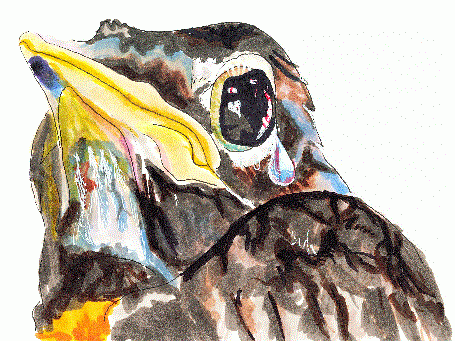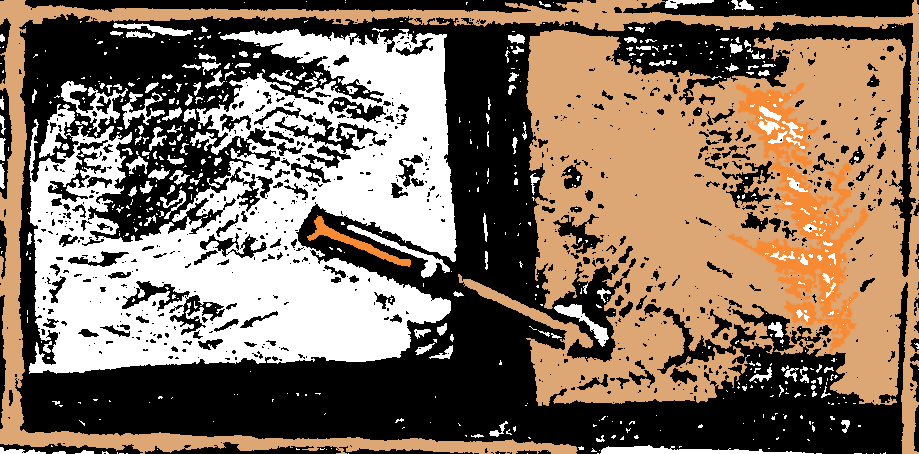This year, as I edit Out of Tales, I’m finally getting around to two old bookstore finds: The World Is Round by Gertrude Stein and HERmione by H.D.
The first is a children’s book. I would have said “ostensibly” a children’s book, because it’s written in very strange, Steinian, Cubist-inspired prose, the plot and characters are stylized and nonliteral (the lion, while probably my favorite part, does not make anything one might ordinarily describe as sense).
But I found an Amazon reviewer who mentioned loving it as a child, and I remembered my own love of nonsense poetry (simpler, yes; “‘Twas a winter night in August / when the larks sang in their eggs / and a barefoot boy with shoes on / stood kneeling on his legs”) and how much I enjoyed it when my mom introduced me to absurdism in the form of Waiting for Godot. I remembered also how Diana Wynne Jones and William Blake both said children understood their work better than adults did. So, yes, it’s a children’s book, and I wish I’d tried it as a kid. It would have taken more patience than my favorites, as it doesn’t pull one through with the addictive force of immersive writing, though the absurd elements can be highly amusing if you have a taste for nonsense.
The plot is light. The gender roles are weirdly normative, given that it was written by Gertrude Stein (“oh dear,” the lachrymose girl often thinks, whereas the boy starts out dauntless, and his primary emotion is excitement). On the other hand, their plot arcs (cutely — too cutely? — symmetrical) give the girl a mild adventure that lets her find her confidence and the boy his first experience of fear. The last chapter is the most jarringly absurd of all, in that we decidedly do not find out (for instance) what happens when the girl comes back from her adventure, but we do learn (in a whole two pages) that they are not cousins after all and will get married and live happily ever after.
At Stein’s insistence, the original edition was printed with pink pages and blue ink; a more recent reproduction (not mine) had this too, and I imagine it would add to the experience.
HERmione, on the other hand is a roman a clef for adults, and it is to my eye a lot less polished and a good bit more interesting (if also suffocating). I’m about a quarter of the way through, so I can’t tell you much about the overall arc, but it’s a fictionalized account of the period after H.D. dropped out of Bryn Mawr and her maybe-love affairs with Ezra Pound (George Lowndes in the book) and one Frances Gregg (Fayne Rabb in the book).
First, though: who even was H.D.? That was the pen name of Hilda Doolittle, originally known mostly for her Ezra-Pound-associated symbolist poetry, but (if this book is anything to go by) she’s definitely worth the renewed feminist attention she’s getting now.
The style is stream-of-consciousness, and sometimes strange in a Steinian way (shifting repetitions of phrases and motifs that let in meaning sidelong; for instance, H.D. will take a phrase like “Names are in people, people are in names” and develop it into “Trees are in people. People are in trees” and, chapters later, will still be obsessing about names and trees in ways that bring deepening layers of significance to both). Her approach, however, is much more organic and personal than Stein’s either here or in Three Lives (the other Stein book I’ve read), and she’ll mix the (stereotypically) childish, repetitive, wordplay-based language with cutting (even catty), syntactically complex, openly sophisticated critical judgments about people and culture. The juxtaposition is pretty thrilling. Don’t be daunted, though; it’s a lot more readable than James Joyce’s masterpieces and (for me) a more congenial headspace (it doesn’t feel like everything is a creepy double entendre, a vibe I…definitely got…from my single-page effort at Ulysses and my college read of A Portrait of the Artist as a Young Man).
I called it “less polished.” I mean this as mostly a compliment! And it’s very understandable: the book wasn’t published during her life, and my impression is that it and other autobiographical works came out of her therapy with (drumroll) none other than Freud himself. It means there’s a lot of vigor, frankness, and shameless weirdness (though the last may just go under the “modernism” umbrella).
Not 100% a compliment; when I call it suffocating, I refer not only to the fact that Hermione herself feels as if she is suffocating in a sea of trees, though that is a prominent piece of her experience; I refer also to the fact that we drown in the minutiae of her perspective and it’s hard to get a clear sense of anyone else in the book (though there are, as I mentioned, some rather nasty and relatable snapshots of different kinds of snobbishness and over- or under-sophistication as they exist in various unpleasant characters; she herself comes off as a bit snobbish and unpleasant as a result).
I’m very glad I’m reading these, and I wish I’d read them earlier. Might have given me the courage to get (even) stranger, and stranger at the elemental linguistic level, than I already do in Out of Tales.

